Our Lady of Fatima, Portugal: The altar of the world
No place has captured the Catholic imagination as much as Fatima in Central Portugal. Home to less than 15000 residents, it is a major destination for Catholic pilgrims, attracting nearly 8 million of them annually. Its claim to a permanent place in the Catholic mind is based on a series of Marian apparitions of Our Lady of Fatima, Portugal. The three secrets entrusted by Our Lady, to a trio of shepherd children from the town, has fired the popular imagination for over a century.
The children who witnessed the apparitions of Our Lady of Fatima were Lucia dos Santos aged 9, and her cousins Francisco and Jacinta Marto, aged 8 and 6 respectively. The first of the six visions occurred on 13 May 1917, when they were out in the countryside tending sheep.
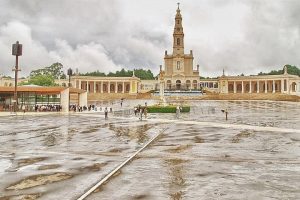
The Sanctuary of Fatima
In the vision, a woman bathed in a glow of bright light identifying herself as Our Lady of the Rosary, exhorted the children to pray the rosary for world peace. Over the course of six appearances on the thirteenth of every month from May to October 1917, the Virgin Mary or Our Lady of the Holy Rosary of Fatima gave the children three secrets. She also predicted the death of two among them- Francisco and Jacinta who would succumb to the worldwide influenza pandemic of 1918-19.
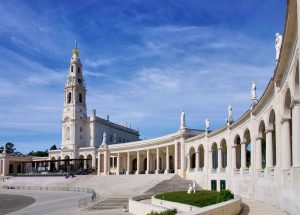
Almost eighty years later, the pious siblings were beatified by Pope John Paul II in 2000, making them the youngest to be so in Church history. On 13 May 2017, Pope Francis canonised the children as saints exactly a hundred years after the date of the first vision. Sister Lucia went on to become a Carmelite nun, who died in 2005 at the age of 97. In a first major step to her eventual canonisation, Sister Lucia was accorded the title Servant of God, on 13 February 2017.
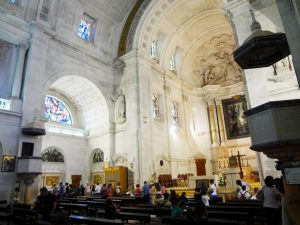
From that series of appearances, Fatima has grown to become one of the largest and most important pilgrimage sites for Catholics. Fatima has two important basilicas which stand at two ends of a gigantic central square, designed to accommodate thousands of devotees. In addition to this area known as the Sanctuary of Fatima, the town also has many places to visit that can give the pilgrim an idea of the life and times of the three shepherd children.
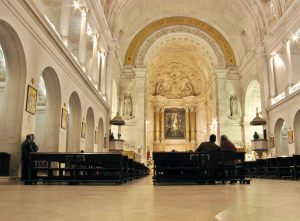
Inside the Basílica de Nossa Senhora do Rosário
The Basílica de Nossa Senhora do Rosário dedicated to Our Lady of Fatima, Portugal is the older of the two Basilicas, construction on which began less than ten years after the apparitions appeared. It stands at the very spot where the three children were playing on May 13, 1917, when a sudden flash of lightning frightened them enough to herd their flock to return home. Designed by the Dutch architect Gerardus Samuel van Krieken, the impressive Basilica is an outstanding example of Neo Baroque style. The tombs of the siblings Francisco and Jacinta Marto are located at each end of the transept.
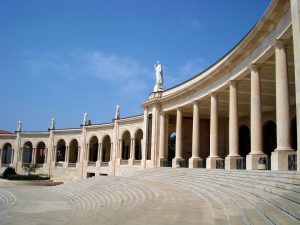
On both sides of the Basilica runs a magnificent Colonnade of 200 columns, half columns, 14 altars and a Way of the Cross in ceramic. Atop the colonnade are the statues of seventeen saints, some of whose congregations exist in Fatima.
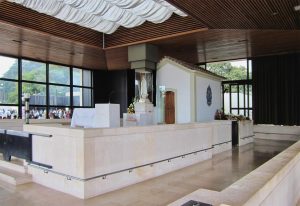
The Chapel of the Apparitions- built on the exact spot where Our Lady appeared
The Chapel of the Apparitions is the very heart of the Sanctuary of Fatima. It was in this exact spot that Our Lady appeared to the children in five of the six apparitions, and indicated that a chapel in her honour was to be constructed. Though it has undergone a few changes over the years, the Chapel largely maintains the character of the original one constructed in 1919. The statue of Our Lady lies on the spot where the holly oak tree where she appeared used to stand. The tree itself has been removed and has been used to make religious relics.
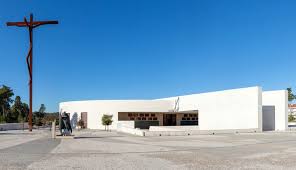
The second Basilica of the Most Holy Trinity which stands at the other end of the central square is a huge modern construction that can seat 8633 people. Although conceptualised in the 1950’s, the Basilica was finally consecrated in 2007. The product of an international design contest, the architecture has some stunning features that justify its selection by an international jury.
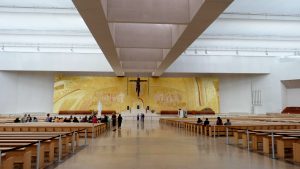
The eventual winning entry was by the Greek architect Alexandros Tombazis, and on stepping into the basilica you will realise why it made the cut. The circular basilica is 125 meters in diameter and does not have any interior support. Its only support comes from two overhead beams that give the basilica a minimalist yet elegant look. The basilicas’ architecture and design was accorded a well deserved honour when the International Association for Bridge and Structural Engineering awarded it the Outstanding Structure Award in 2009.
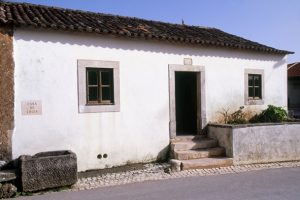
Next in the list of must see places are the houses of the three shepherd children, located in the village of Aljustrel which is about 4-5 kms away from the Sanctuary of Fatima. You can drive to the village or catch the tourist train or even walk a brisk 40 minutes on the Via Sacra to see the houses. They have been preserved in more or less the same condition as when the children lived there.
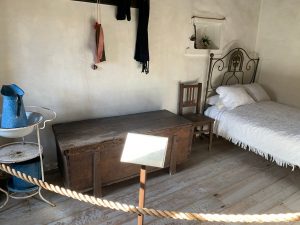
The first is the house of two saints Jacinta and Francisco Marto, which they shared with their parents and three other siblings. A short distance away is the home of their cousin Lucia dos Santos, who survived the flu epidemic and died only recently in 2005.

Chapel of Saint Stephen also known as Hungarian Calvary
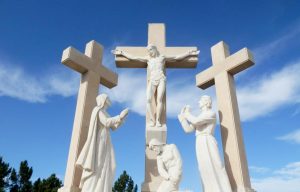
The Via Sacra is the route that the three children took from their village to the site of the apparitions known as the Cova da Iria. The paved path passes through shady groves of olive and holly oak trees and has the fourteen stations of the Way of the Cross. The route ends atop a hill at the Chapel of Saint Stephen or Valinhos Sanctuary which was funded by Hungarian Catholic refugees who had fled their country during the cold war. For this reason the chapel is sometimes referred to as the Hungarian Calvary.
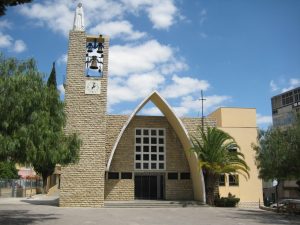
Igreja Paroquial de Fátima, the parish church at Fatima
One can also drop in at the Fatima parish church which dates back to the 1500’s, but has undergone many reconstructions in its history. The present modern structure was completed in 2000, when Jacinta and Francisco Marto were beatified. The children were first buried in the cemetery located in front of the church, before their tombs were moved to the Basílica de Nossa Senhora do Rosário.

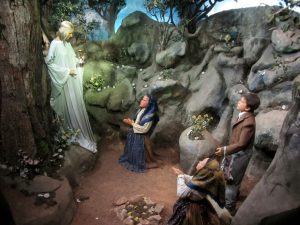
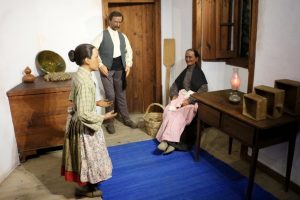
Besides the many churches and chapels, Fatima has several other attractions that can make your trip more complete. Of these the Museu de Cera or the waxwork museum is one you shouldn’t miss. The museum has a collection of 31 lifelike statues that portray the story of the Fatima phenomenon in a very tasteful and realistic way. You will come away more informed about the historical and cultural context in which the event occurred and how it reshaped the history of Fatima forever.
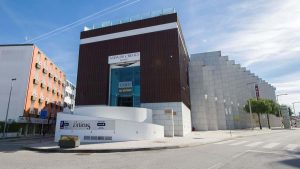
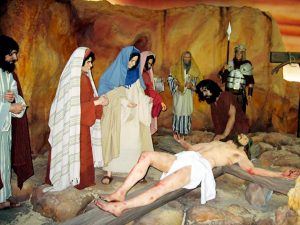
The second museum, the Museu Vida de Cristo which opened in 2007 in a beautiful modern building is also worth visiting. It has a collection of over 200 wax statues of excellent craftsmanship which have been arranged in 33 different scenes. They depict the entire story of Jesus from the Annunciation before his birth to the Ascension after his resurrection. You will marvel at the museum’s modern architecture besides the attention that has been paid to detail in crafting the waxwork statues.
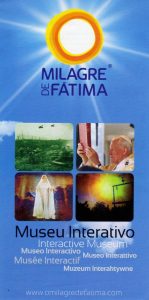
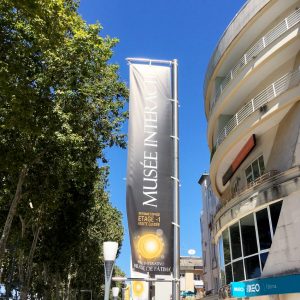
There is yet another museum at Fatima, the Museu Interativo which deploys modern technology to narrate the story of the historical Apparitions that occurred in 1917. Using holograms and 4D content, you will be taken on a spectacular trip to experience all the events including Miracle of the Sun, the appearance of the Angel of Portugal, and the apparitions of Our Lady. Fatima is often referred to as the Altar of the World- once you view the Interactive presentation you will get a sense why this is indeed so.
After a surfeit of places related to religious devotion on your pilgrimage, you might be ready for a break to see something beyond this. Surprisingly, Fatima scores equally high in this area too, as it is not very far away from one of Portugal’s top paleontological sites. Head to the Monumento Natural das Pegadas de Dinossaurio, a dinosaur park situated in the village of Bairro. In an abandoned limestone quarry in the Serra de Aire is a set of the longest and oldest sauropod footprints found anywhere on earth.

Sauropods, among the most gigantic of the dinosaurs
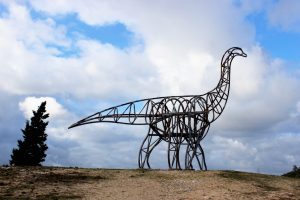
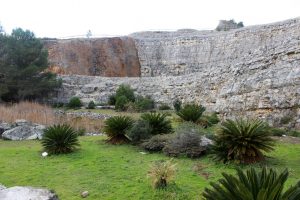
Sauropods were some of the largest creatures to have walked the planet, with long bodies and tails, and small heads. The tracks are set in limestone in what was once a muddy lagoon and are believed to be about 175 million years old.
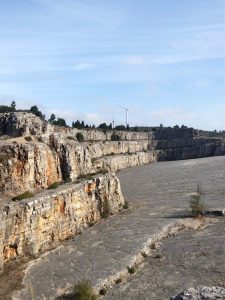
The tracks are so astonishingly detailed that palaeontologists could arrive at new conclusions about the anatomy of the Sauropod and also formulate new theories about their behaviour. Your trip to the park will begin with an introductory video of 20 minutes, to help you better understand the significance of the dinosaur footprints.
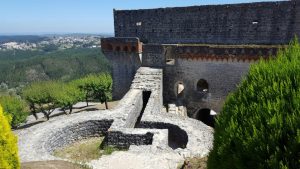
Ourem Castle, abode of the Counts of Ourem

Lying ten kilometres away from Fatima is the town of Ourem, municipal headquarters and home to a hilltop castle that can be accessed by a very steep gradient. It is advisable to wear sensible shoes for the outing as you will have to negotiate steep stairways running through the old quarter of Ourem, before you get to the castle. Once you get there you can enjoy splendid views of the valley below and see firsthand the lavish home of the Counts of Ourem which was built in the fifteenth century.
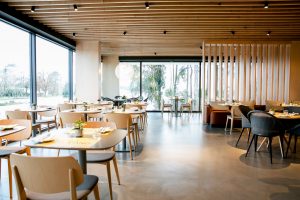
Casa Platano Restaurant, Fatima

Fatima scores high on food too as you can savour pretty good Portuguese fare, at decent prices. The Casa Platano Restaurant is a top rated restaurant and has excellent ambience and a very wide range of Mediterranean cuisine and wines.
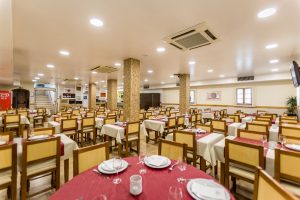
Restaurante A Tasquinha, Fatima
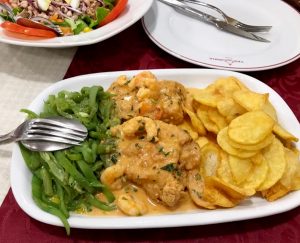

Restaurante A Tasquinha is another famous restaurant which is highly rated and has pretty good ambience, authentic Portuguese fare and good service.

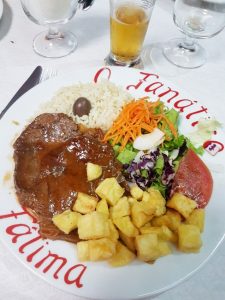

Benfiquista restaurant is not just for sports fans!
A very popular hangout is the Benfiquista restaurant which has been named after a famous sports club and caters mostly to locals. It has menus in different languages and the prices are very reasonable. You can try the house speciality of pork over potatoes balanced with olives and pickled carrot and cabbage. The veal stew is also excellent and while you are at it you can try the Bacalhau a traditional Portuguese dish of salted cod, potatoes, onions, hard boiled eggs, olives and topped with olive oil. The layered dessert is pretty good too.
The other good restaurants are Taverna do Merceeiro and O Ze Grande. O Ze Grande is a short walk away from the Sanctuary and serves a good variety of traditional Portuguese dishes and desserts.
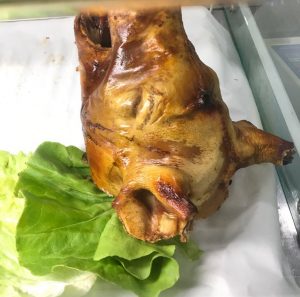
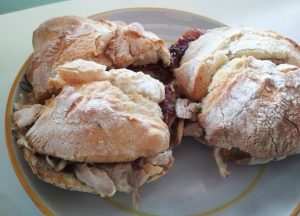
If you like great sandwiches made from roast suckling pig try the Mister Leitao restaurant, which is a small family run eatery. Unfortunately the demand for the sandwiches is so high you will be disappointed if you were to walk in and ask for them. Instead, try calling them on +351 249 538 120 and place an order. It’s best to place an order in the morning or even the previous day, the quality of the ingredients will tell you what makes them such a runaway hit.
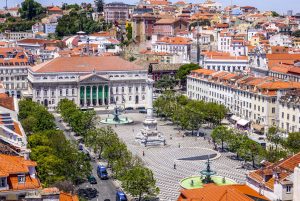
Lisbon, the capital of Portugal is 128 kms to the south of Fatima
Lisbon, the capital of Portugal is 128 kms to the south or an hour and a half away from Fatima. Lisbon has a lot of places worth visiting, both historical and culinary.

Don’t forget to try the egg tarts, that Lisbon is so famous for
If your itinerary takes you here, be sure to try Lisbon’s iconic egg tarts. The taste comes from the crust which is exceptionally flaky and crisp, while the egg cream is still soft. The best ones are available at the Pasteis de Belem, the Manteigaria or the Confeitaria Nacional. All three places are equally good but the Manteigaria does have its nose ahead in the contest.
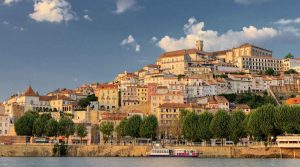
Coimbra, the medieval capital of Portugal is 85 kms north of Fatima
You can also visit Coimbra the ancient capital of Portugal which is 85 kms from Fatima, but in the other direction which is northwards. Like Lisbon the place is steeped in history and has many connections to the Catholic Church. One of its most popular saints, St Antony of Padua studied at the Abbey of Santa Cruz in Coimbra- but hey! That’s a story for another day!


